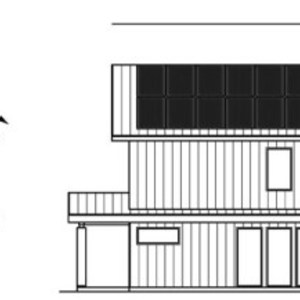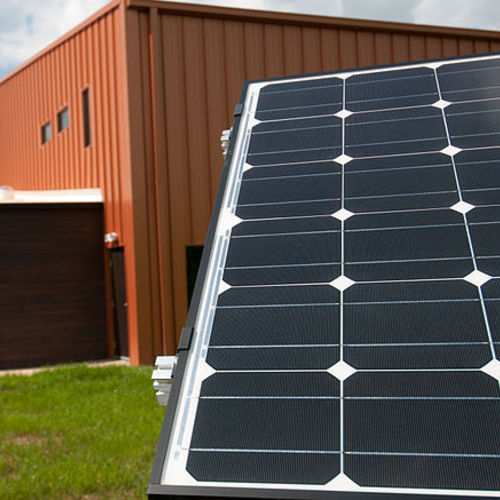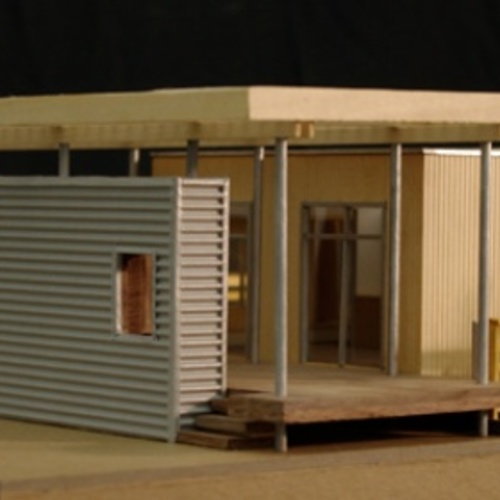
A meeting with our electricity provider, People’s Energy Cooperative (PEC), shed a new light on the difficulty of incorporating solar or wind distributed generation systems (DG) into the energy mix of electricity providers.
PEC provides electricity to rural customers in our area and previously had two modes of recouping fees for obtaining and distributing electricity to its customers. These were a base monthly fee ($37) and a fee per kWh used (~$0.11 per kWH). However, the base fee did not cover the entire cost of distribution (~60% of cost) with the remaining embedded within the per kWh used (~40%).
The benefit of such a system from an environmental view is that it incentivizes users to reduce their usage by keeping kWh more expensive. However, with net-metering laws passed by many legislatures, the power companies were required to purchase excess electricity generation by DG systems at the retail rate (the same rate they charge for electricity) rather than at the wholesale rate (the rate they generate or purchase electricity). This means many DG systems were netting their kWh usage to zero for the year, and therefore the electricity providers were not recouping the embedded distribution cost from the electricity usage fee.
As a consequence, electric companies lobbied and were successful in many legislatures (including Minnesota) to incorporate a “Grid Access Fee” to DG owners. The addition fees increased our solar panel payback time period to more than 20 years for our system, significantly longer than those quoted for high solar production, high $/kWh states like California where payback might be 6-10 years.
Here’s a look at the numbers from our home:
Size of system: 9.8 kW
Cost of system: $30,840
Federal rebate (30%): $9252
Final cost of system: $21,588
Cost of system per installed watt: $2.20
Predicted annual production: 11,200 kWh
PEC cost per kWh: $0.11
The rest of the calculation assumes we use approximately as much electricity as we produce:
Money saved by being net zero (11,200 kWh times $0.11): $1,232
Basic monthly service charge: $37.00
Monthly grid access fee: $24.31
Here’s the calculation for the total cost of the system—(money saved) – (yearly fixed costs) x (number of years). Three grid-tied calculations, based on:
- No yearly fixed costs (can’t eliminate monthly service charge unless you are off-grid anyway, and what if they did not charge the grid access fee)
- Only grid access fee (see #1)
- Include all yearly fixed costs
- $1,232 savings times X years = $21,588 (payback = 17.5 years).
- ($1,232 – $291.72) times X years = $21,588 (payback = 23 years).
- ($1,232 – $735.72) times X years = $21,588 (payback = 43.5 years)
To alleviate the gripes of DG owners the PEC is discussing moving all of the distribution costs into the basic monthly service charge. In this case, the payback period would be 17.5 years (although this raises fixed costs that can’t be eliminated, so on net examples #1 and #2 result in the same amount of money spent for kWh obtained). Currently, the payback period is 23 years with the monthly grid access fee for DG customers.
If the system could be converted into an off-grid architecture, then the minus sign in example #3 turns into a positive sign and the payback period drops to 11 years. This, however, would entail significant spending for battery storage, and would be difficult in the winter months where electricity use is high (heating) and solar production is low.
There are other reasons for solar
So, for our system the payback time is between 17.5 and 23 years. Not a great return on investment, but we converted to an all electric house and a photovoltaic system for many other reasons. Among them:
- Reduced carbon footprint
- Eliminated combustion in the house for cleaner air
- Reduced distribution costs to one provider
- Eventually paired with batteries and electric car
As a DG owner, we did not feel much love from our electricity provider and felt like they only put up with us because they are required to do so by the state through net-metering laws. From their point of view, DG owners do not reduce the cost of production or the number of power plants required to produce electricity. Solar customers do not produce power reliably (sun does not always shine, wind does not always blow) nor is DG power produced at times of peak load on the grid.

For rural systems that don’t have a significant industrial component, the peak load comes between 5 p.m. and 8 p.m. when people get home from work and turn on all of their appliances.
Complicating things further is that most of the solar power of a grid-tied system is not used by the homeowner but is fed into the grid during daylight hours and “normal” electricity is pulled from the grid by the DG owner the other 12-18 hours of the day. Therefore, the DG owner actually uses mostly power plant-generated electricity, not solar panel generated electricity. In states without hydroelectric, nuclear or significant natural gas use, the “normal” electricity can be quite dirty and inefficient.
Lots of coal in the mix
The pie chart below shows how electricity is generated in Minnesota, and how electricity is generated by the Dairyland Electrical Cooperative (a major supplier of PEC energy).


Dairyland Electrical Cooperative generation for 2017 and 2027
Wow, so in 2017 Dairyland generated 64% of its electricity with coal. A recent brochure for the DEC Alma power plant located in Alma, Wisconsin (which we have driven by several times on trips along the Minnesota/Wisconsin border) reads:
The Alma Site (Alma Units 1-5 and JPM) burns blended coal that arrives by barge, train, and truck from Wyoming and Utah. The barge coal moves by train to St. Louis and then up the Mississippi River about 575 miles to Alma. After being crushed, the coal is fed into coal mills, also called pulverizers, where it is ground into a fine powder. The pulverized coal is then burned in the boilers to generate steam. The entire steam cycle operates to rotate the turbine shaft, which is connected to the shaft of the electric generator. The rotation of the generator by the turbine is the origin of electric energy.

And generating electricity through the burning of fossil fuels (coal, natural gas, oil, etc.) is a tremendously wasteful process with only one-third of the embedded energy in the fuel being realized as electrical energy.
The U.S. Energy Information Administration calculates energy losses using British thermal units (Btu) and a “heat rate,” the number of fossil fuel derived Btu to generate a kWh of energy. As stated on the EIA website, “To express the efficiency of a generator or power plant as a percentage, divide the equivalent Btu content of a kWh of electricity (3,412 Btu) by the heat rate. For example, if the heat rate of a power plant is 10,500 Btu, the efficiency is 33%. If the heat rate is 7,500 Btu, the efficiency is 45%.”
Coal and oil had heat rates of 10,465 and 10,834 respectively in 2017 (~33% efficiency) while natural gas had a heat rate of 7,812 ( ~43% efficiency).
On balance, benefits of all-electric
From a general point of view it doesn’t matter that we do not use our solar energy directly. We are putting 100% clean energy onto the grid for someone to use, and that does eliminate the use of a corresponding amount of “dirty” electricity—even if that does not come at peak load for the electric company.
In going all-electric we eliminated direct on-site use of natural gas for heating, hot water, and laundry (dryer), but using natural gas most likely would have a smaller carbon footprint than using “dirty” electricity. For example, high-efficiency gas furnaces are available that utilize up to 95% of the embedded energy while the most efficient conventional gas-fired storage water heaters are Energy Star models with energy factors between 67% and 70%. So, we essentially exchanged the possibility of utilizing mechanicals with 65% to 95% efficiency (on-site natural gas) with mechanicals that are 33%-45% efficient (grid-generated electricity).
Now, before one throws in the towel, there are ways to put everything back in balance and remain with an all- electric house. Air-source (or ground-source if you can afford it) heat pumps are available, which increase the efficiency of electric mechanicals by 200%-300% and therefore make them equally if not more efficient than natural gas. Essentially they use electricity to take heat out out of the air (using refrigerant technology) so that for every 1 Btu you put into the system you get 2-3 Btu out (almost magical). Systems are now available that function down to -15 degrees F.
-This post is part of a series describing the construction of a net-zero energy house in Rochester, Minnesota, by Tracee Vetting Wolf, Matt Vetting, and their son Max. You can find their complete blog here. A list of their previous posts appears below.
Other posts about the Minnesota Homestead:
Why We Built an Energy-Efficient Home
Energy Planning for a Net-Zero Home
Weekly Newsletter
Get building science and energy efficiency advice, plus special offers, in your inbox.














14 Comments
Matt,
Great post! Your fixed monthly utility costs are even higher than mine here in NH. Our PV payback was also 3+ decades so we passed. You laid out a case for why PV doesn't make sense and I began to wonder why a smart person like you ultimately opted for PV after all? You made a great case though with the dirty grid argument.
In Vermont, Green Mountain Power is leasing Tesla Batteries to customers. The benefit to the customer is that it offers them electricity should the power go out without needing a generator. It helps Green Mountain Power as they can 'tap' the batteries at peak demand. Outside Vermont, Including energy storage would hopefully make the utility company a bit more enthusiastic when it comes to solar.
Of course, Matt- your house can't be truly green unless it has solar.... I can brag all I want about my 15" wall cavities or R-85 roof insulation or how my annual electric bill (which includes HW, heat , AC, etc) is 1/3 the cost of a typical annual heating bill in my area. People nod, perplexed, and then ask: "But does it have solar Panels?" "GeoThermal?"
Solar is not an option for us for a number of reasons, but for a 2-cent per kWh premium I can purchase 100 per cent renewable energy through Bullfrog Power (mostly wind, but also solar and low-impact hydro). For basically $180.00 a year, all of the electricity that we use is carbon-free.
Might be a case where going with a smaller system and practicing "selfish solar" with a cheap "battery" (aka water heater) proves to be more economical.
I'd be interested in an article if someone did something along the lines of only using solar for themselves to run their heat pumps and water heater with an RV power switch (or equivalent) that automatically switched between the two power sources.
Something like this:
https://gpelectric.com/products/50-amp-transfer-switch/
When there's solar power, it runs off that. When there is not, it pulls from the grid. A mains disconnect would still be required in the event of a downed powerline/blackout. We have a large, physical throw switch at the farm to do something similar (mains for most of the time, backup generator when the power is out). I am unaware of an automated throw switch, but I am sure something must exist to do so.
One would have to consult their local municipality and power provider for any requirements they have.
If bi-directional chargers (like Wallbox Quasar) and plug-in cars become affordable enough, they may help to make rooftop solar more cost-effective for folks in isolated communities. It would be great if you could charge your car during the day (at home or at work), and then tap into the battery in the evening to meet all or most of your local demand.
Just a note about that Alma coal plant pictured. That picture is quite old. Only one of those two units still operates, the older, less efficient, and much dirtier plant on the upriver side (right of the picture) has been demolished.
I think there's a big opportunity for demand side management, at least for residential. For example, I don't care when my water heater runs, as long as I have hot water available while I'm likely to be awake. As an experiment, I've turned it off a day or two before I go on vacation, and there's still enough hot water to shower and run the dishwasher with no noticeable interruption, even if it's been off for almost two days.
I also don't care when my dishwasher runs, as long as it's done by the next day. I can set it to do delayed start, but with no incentive nor any information about when there might be an excess of renewable power available, it doesn't seem very helpful.
No do I care when my electric car charges, as long as it's done by the time I leave for work. I usually set a timer so it charges in the early morning hours, since that seems to be best for the health of the battery.
I'd be open to having my washer and dryer run on a schedule too. The noise from running them overnight is disruptive (laundry room is in the hallway outside my bedroom), but they could run during the day while I'm at work.
One problem seems to be, electricity is too cheap, so there's little room for utility companies to incentive desirable usage and still make a profit. They can charge a premium for undesirable usage, but that's a lot less popular. For example the standard electric rate from my utility is around $0.11/kwh . They have an optional time of use plan that's slightly cheaper during off peak times, but much more expensive on peak. The off peak savings isn't enough to be worth the hassle of keeping track, and the on and off peak timing seems arbitrary. They also have a peak demand plan that's a little cheaper off peak, but electricity used during peak times is potentially much more expensive.
I agree that a lot of household demand could be quite elastic in its time of use. I envision a system where the the electric rate is the spot wholesale rate plus a fixed mark-up. The local electric distribution utility doesn't care what the rate is as there profit doesn't change with price. They would have a website that published the predicted cost of electricity for the next couple of days with a standardized machine readable format. Your major energy consuming appliances would then include in the electronic controls, that they already most likely have, the ability for you to program in a "must be done by time" or an "acceptable range of operation". You set the dishwasher to be done by 5 pm tomorrow. It goes on line and calculates the probable lowest cost time to operate.
I've never understood why more people with a large yard or acreage don't mount their solar panels on the ground so they can brush off the snow (and do maintenance on them a little easier). Oh well.
I'd like to see an evaluation of the number and types of appliances, motors and lighting fixtures used now that they've been operational for a while. Did you install any solar tubes? That would cut down on the amount of day lighting you'd need.
Matt,
Ty for sharing #s. So few folks will. I'll share mine (for Wisconsin):
Size of system: 8.3 kW
Cost of system: $24,200
Coal fired is the bulk of the dirty problem in Wisconsin as well. We live ~30 miles from a nuclear power plant that started up in 1970 ... that has been decomissioned! Crazy.
>Solar does not produce during peak load.
That ^ is one reason I'm a bit upset with the renewable energy folks. ALL systems need on-site storage, not just grid tied. We aren't (all) trying to go off-grid and become hermits, and instead just wanting to maximize _when_ our onsites do generate, so why is nobody really thinking and figuring out house batteries?
Telsa house batteries have been ... back-logged forever. Our contractor went with Enphase, and Enphase's house batteries are ... ALSO on pre-order, like Telsa. :/
People have been using batteries for longer than Tesla and Enphase have existed. Lead acid batteries just aren't ideal, and neither are Tesla or Enphase. Who knows when ideal small scale batteries will exist.
Rooftop residential has always been the more expensive alternative and designed for less than optimal production.
I'm concerned with this "Now, before one throws in the towel, there are ways to put everything back in balance and remain with an all- electric house. Air-source (or ground-source if you can afford it) heat pumps are available, which increase the efficiency of electric mechanicals by 200%-300% and therefore make them equally if not more efficient than natural gas. Essentially they use electricity to take heat out out of the air (using refrigerant technology) so that for every 1 Btu you put into the system you get 2-3 Btu out (almost magical). Systems are now available that function down to -15 degrees F."
The above statement that air or ground source heat pumps with 2-3 COP (2-3 BTU's out for every electric BTU in) misses an important point. His electricity is comes from 33% efficient grid power, a lot from dirty coal, so the heat pump is no more energy efficient, when including the 2/3 of the BTU's lost is generating and transmitting the electricity to the heat pump, than just burning natural gas in a 95% modulating condensing furnace. Unless utility electricity is mostly from renewables and nuclear (unfortunately for now), which for most utilities is still a small %, then burning the fossil fuel at the user end is more efficient than converting it from thermal to mechanical (to drive the generator) to electric, then transmission and distribution and ultimately back to heat by a heat pump using electricity to squeeze heat from cold air or water. Reminds me of my graduate school advisor/professor reminding me that turning off the lights in the lab saved four times that amount of input energy at the power plant; yes in the early 70's it was 25%.
OK, but this blog is part of a series about them building an energy efficient home as a _holistic_ approach. Electric consumption is only one facet.
The problem with real world, home HVAC is arcane thinking that supply is stable and unlimited, especially when it comes to home heating. As a simple homeowner, smart professionals have given me a simple answer: throw more BTUs at the problem. 90kBTU natural gas furnance? Sounds small. Throw 150kBTU at the house.
The industry just goes along with this. NO serious work is done to get homeowners to _reduce_ their energy usage, regardless of fuel, by making their home more efficient.
Have you, in all your years of experience, been on a job site where the HVAC professional recommends to the homeowner that they get an energy audit, a Manual J done, or a quote on air sealing & insulating?
Frankly, that's a failing of the industry to meet expectations of the modern, conscientious homeowner that I hope reads GBA and blogs like this. If you had been holistic, and said -- "stick to a 95% AFUE furnance AFTER air sealing & super insulating the house to 3 ACH50 so that house load gets down to 40kBTU and fuel usage is minimized", then I would have agreed with you. But you didn't. And that is arcane thinking that doesn't consider all the moving parts.
Conscientious homeowners, like this blogger, want to use LESS energy, whatever the fuel. If we can use less electric energy because of COP, but the industry hasn't made generation of the fuel cleaner, that is the industry's problem.
my 2100 sf 1956 built home is fairly well insulated, R-40 attic with reflective foil on top of the fiberglass, but only R- 13 (2x4) walls, heated basement with R-6 wall insulation, and Heat Mirror windows (center of glass is about 5 F cooler than center of room when it is 0 F) on my five over 4' square picture windows and original Anderson double pane windows, has a 40,000 BTUH Rheem condensing furnace with an ECM fan and the furnace kept up nicely when in February 2015 (remember the Polar Vortices) the average central NY temperature was 9 F, 17 degrees below normal, the coldest February since 1888. Note that air source heat pump efficiency drops a lot once temperature drops below freezing increasing the electric usage to get more heat unless there is non resistance heating as a backup. As a side note I have reduced the energy usage of the two YMCA branches (48 and 28 year old buildings) to 130,000 and 110,000 BTU's/sf/year using modulating condensing boilers, variable speed drives and LED lighting throughout; in fact the 28 year old building uses 25 % less electricity now than when it was originally opened in 1992 despite it now being 3 times the size. And compared to a similar sized new Y that opened in Western NY my 28 year old Y uses only 2/3 the EUI.
Log in or create an account to post a comment.
Sign up Log in